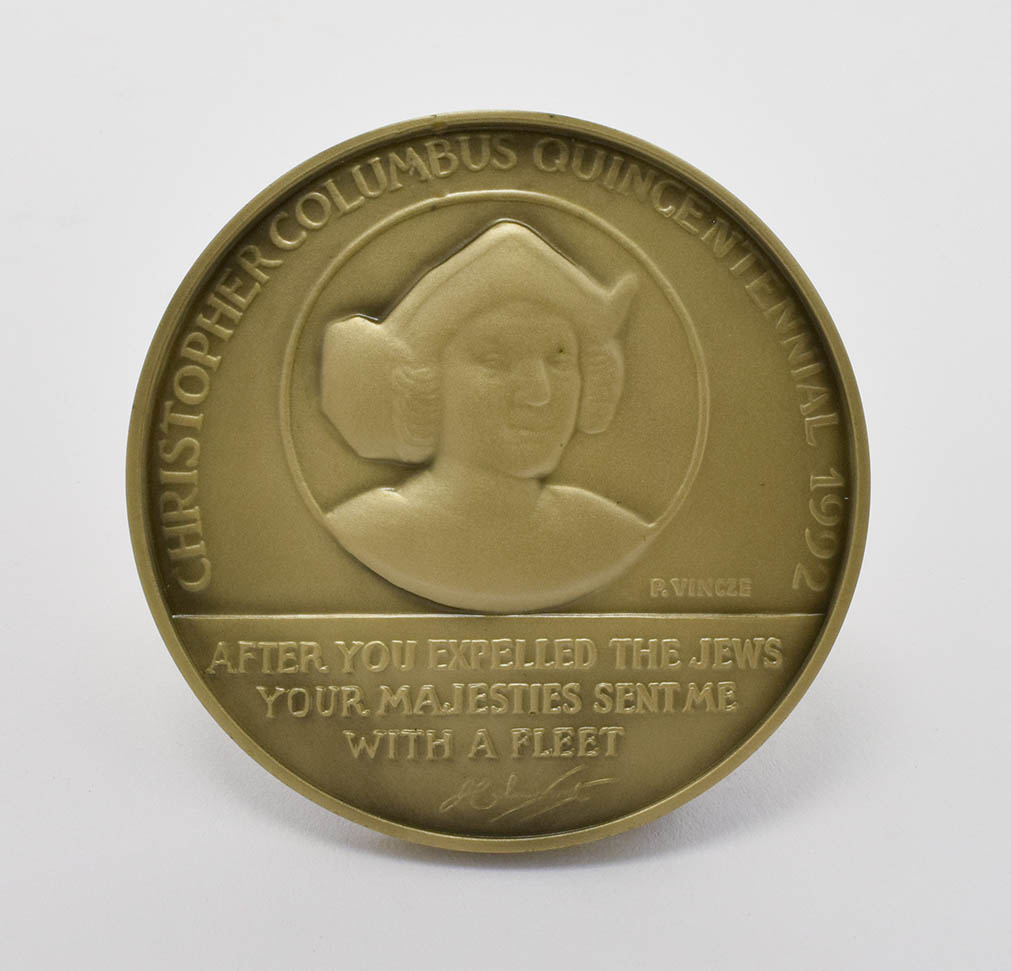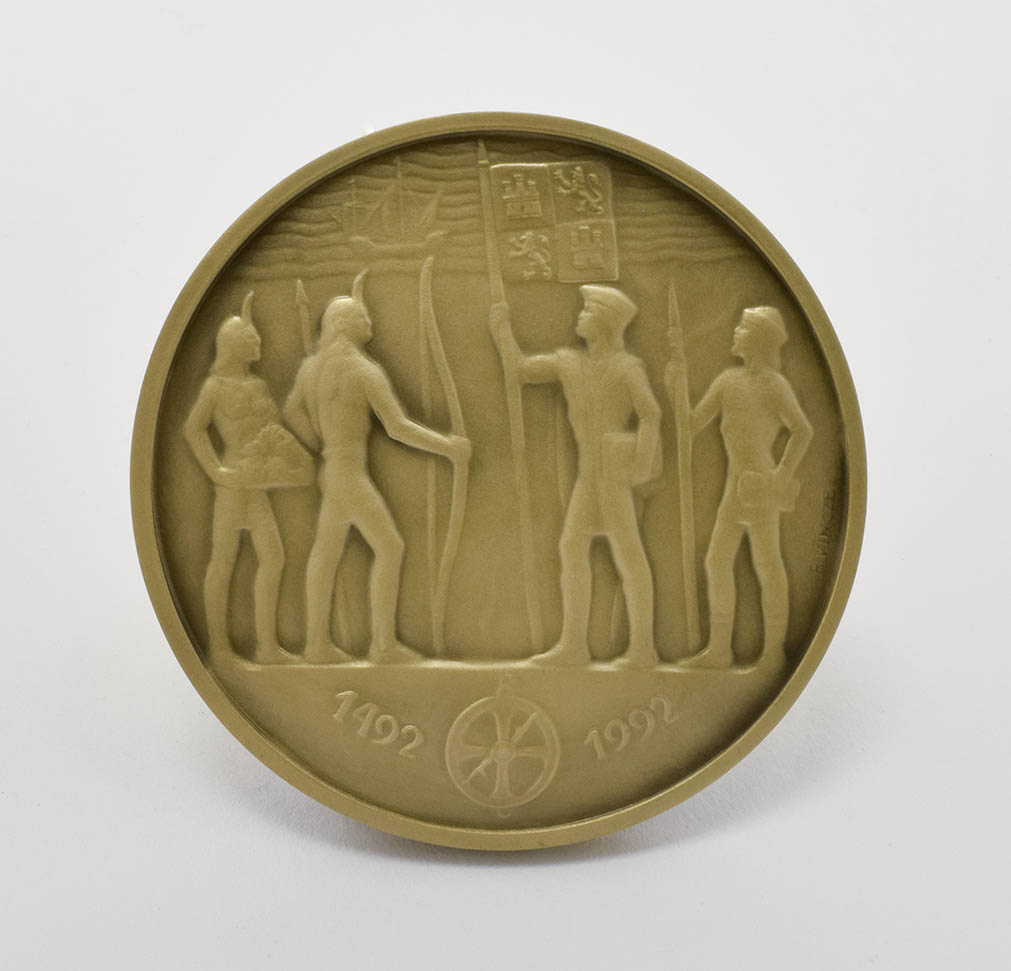Spanish Expulsion (1492) and Luis Torres (d. 1492)
Paul Vincze (Hungary 1907-1994 France)
London, England, 1986
Bronze, dia. 2 ¼ in.
Cincinnati Skirball Museum, Jewish-American Hall of Fame Collection, gift of Mel and Esther Wacks, Debra Wacks, and Shari Wacks, 2019.7.47
This medal commemorates the 500th anniversary of the voyage of Christopher Columbus across the Atlantic Ocean and the 500th anniversary of the expulsion of Jews from Spain.
Spanish Expulsion, 1492
The history of Spanish (Sephardic) Jewry goes back at least 2,000 years to the time of the Roman Empire. The first anti-Jewish laws were passed in 589 CE, when it was ruled that children of a mixed Jewish-Christian marriage should be baptized. This soon led to a policy of forced conversion of all Jews. In 694, the 17th Council of Toledo made all Spanish Jews slaves. In the period of Muslim rule (after 711 CE), Jews were generally accepted in society and Jewish religious, artistic, and economic life flourished in what came to be known as the Golden Age of Jewish culture, which lasted until about the 12th century. Jews again faced persecution and violent pogroms and were pressured to convert to Christianity. Beginning in 1478, in the reign of Ferdinand and Isabella, no less than 13,000 secret Jews (Conversos) were executed by the Inquisition. At the same time, the monarchs continued to employ Jewish functionaries in their court. On March 31, 1492 the Edict of Expulsion was signed, resulting in 300,000 Sephardic Jews leaving for refuge in North Africa, the Ottoman Empire (Turkey), the Netherlands, and Latin America. The last Jews left on August 2, 1492, the day before Columbus sailed. This date, the 9th of Av, was also the traditional day of mourning for the destruction of the First and Second Temples. Thus, the first words Columbus wrote in his log were: “After you expelled the Jews your majesties sent me with a fleet.”
Luis de Torres (d. 1493)
There is considerable debate over whether Luis de Torres, who served as an interpreter, was the only known Jew on Columbus’s first voyage across the Atlantic. Some accounts describe him as a Converso who was baptized just before setting sail. What is certain is that he spoke Portuguese, Hebrew, Aramaic, and some Arabic. Torres is said to have completed an inland expedition on the island of Cuba. When Columbus set off for Spain on January 4, 1493, Torres was said to be among the 39 men who stayed behind at the settlement of La Navidad founded on the island of Hispaniola, the second largest island in the Caribbean after Cuba. Coming back by the end of that year, Columbus learned that the whole garrison had been wiped out by internal strife and by an Indian attack. Torres has been described as the first European settler in the New World.


